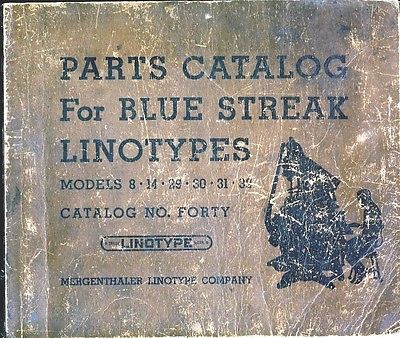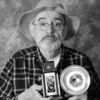PC History Lesson
Mar 23, 2016 07:56:30 #
Man you guys are young - I started in 1964 with paper tape and a 110 baud tty. Put men on the moon and brought them back with less power than your phone has today. Univac 490. First program 50 lines of binary punched in through the maintenance panel.
Go NASA. Keep 'em the air Charlie!
Go NASA. Keep 'em the air Charlie!
Mar 23, 2016 08:12:22 #
The first computer I used was at my job in an auto assembly plant and was an IBM PC with an 80286 Intel processor and a 20MB hard drive. It ran on Windows 3.1 and used 3.5" floppy discs. It was state of the art in 1987 as most people I knew were using 8086 machines that used 6" floppy discs and used the same OS. My kids were learning on Apple 2's (pre Macintosh) in school at the same time. The first computer I owned was a HP that used Windows 98. It was a tank and still worked until I recycled it last year.
Mar 23, 2016 08:22:23 #
jsmangis wrote:
The first computer I owned was a HP that used Windows 98. It was a tank and still worked until I recycled it last year.
I don't know how many times a year I hear someone say they need a new computer. I ask them what they are going to do with it and they say word processing, internet shopping and email. And I think to myself you don't need a new one, any old X86 with Windows 95 or 98 in good shape will do that just fine.
:thumbup: :thumbup:
Mar 23, 2016 09:34:36 #
My first experience with a computer was when i served aboard the USCGC Rockaway in 1970 as a Marine Science Technician. The Rockaway's mission was dedicated to the study of Oceanography and was equipped with a computer to process data collected while at sea. The computer resided in a room approximately 20 by 30 feet and took up most of that space. It received data from punchcards and spit out computations on reels of paper tspe.
Mar 23, 2016 09:40:41 #
My first computer was the TI-99-4a which sold at an unbelievable price of $100. Converted Tandy (Radio Shack) book of 1000 things to do with your computer into TI code. I understand the kids amazement at how slow things were.
Mar 23, 2016 10:14:16 #
my company at the time was pretty narrow minded. Only the sctys had a PC for word processing... So I wrote a simple word processor for the HP9825.. Finally they woke up and and bought a PC, but did not spend the xtra $400 FOR A Co-processer, making it almost useless. Took another 6 months to get the co-pressor approved. Then we have the story about "forbidden" 5" floppys, cause the new ones "didn't work"... [narrow vs wide write widh] and if you put the wrong one in the wrong machine..... sigh
Mar 23, 2016 11:46:08 #
​
Holy smokes! Frank47 . . . It was after 1959 U.S. Navy days we were punching holes into 7/8" wide rolls of paper tape, using a teletype typewriter to talk to a teletype decoder mounted onto a Linotype machine keyboard creating lead slugs with characters on the long edge of lead slug.
Below link will guide U how typesetting machines and computers work together:
.. COPY below link: \/
http://gochipmunk.com/html/contents.html
..
click on ICONS/PICTURES of CHOICE..
..
It was 1972 when things changed again.
..
1972 - Directed installation of Auto Logic Cathode tube typesetter. State of Wisconsin. I schooled 9 "hippies" how/why/when we did certain things in typesetting that never get talked about.
A group of "9 WHIZ KIDS", better known as "Hippies" who used "choppers" for X-portation in those days; ages.... 18 to 23.. from Southern Ill. Univ. were hired for the project.
..
Computer "Assembler program language" was used for the project.
..
Assembly language (or assembler language) is a low-level programming language for a computer, or other programmable device, in which there is a very strong (generally one-to-one) correspondence between the language and the architecture's machine code instructions.
[See below link. First 2 rows; 2nd. pictures from left] show how code (holes) talk to Linotype [hot metal] machines:
.. COPY below link: \/
https://www.google.com
.. COPY below link: \/
/search?q=photon+cathode+ray+typesetting&source=lnms&tbm=isch&sa=X&ved=0ahUKEwjg5szritfLAhVCsoMKHebQALkQ_AUIBygB&biw=1249&bih=621
end..end....
Holy smokes! Frank47 . . . It was after 1959 U.S. Navy days we were punching holes into 7/8" wide rolls of paper tape, using a teletype typewriter to talk to a teletype decoder mounted onto a Linotype machine keyboard creating lead slugs with characters on the long edge of lead slug.
Below link will guide U how typesetting machines and computers work together:
.. COPY below link: \/
http://gochipmunk.com/html/contents.html
..
click on ICONS/PICTURES of CHOICE..
..
It was 1972 when things changed again.
..
1972 - Directed installation of Auto Logic Cathode tube typesetter. State of Wisconsin. I schooled 9 "hippies" how/why/when we did certain things in typesetting that never get talked about.
A group of "9 WHIZ KIDS", better known as "Hippies" who used "choppers" for X-portation in those days; ages.... 18 to 23.. from Southern Ill. Univ. were hired for the project.
..
Computer "Assembler program language" was used for the project.
..
Assembly language (or assembler language) is a low-level programming language for a computer, or other programmable device, in which there is a very strong (generally one-to-one) correspondence between the language and the architecture's machine code instructions.
[See below link. First 2 rows; 2nd. pictures from left] show how code (holes) talk to Linotype [hot metal] machines:
.. COPY below link: \/
https://www.google.com
.. COPY below link: \/
/search?q=photon+cathode+ray+typesetting&source=lnms&tbm=isch&sa=X&ved=0ahUKEwjg5szritfLAhVCsoMKHebQALkQ_AUIBygB&biw=1249&bih=621
end..end....

Mar 23, 2016 11:57:24 #
Waaaaaay back in 1967 I was programming an ibm 1401 computer with punch cards... I even have a few of them left... Heaven help you if you drop a huge deck of the cards and try to get them back into the proper order... Yes I am Old.... Loved the video by the way....
Mar 23, 2016 12:16:49 #
venturer9
Loc: Newton, Il.
burkphoto wrote:
Yeah, well, imagine working with punch cards and Fortran on an NCR Century 100 with 64K of memory! That computer ran Davidson College back in 1973... We had to use it for our Statistics and Computers 101 class.
I can barely imagine what my grandkids will use.
I can barely imagine what my grandkids will use.
This is the Computer I learned on in 1957.....
https://en.wikipedia.org/wiki/Florida_Automatic_Computer
FLAC, the Florida Automatic Computer, was an early digital electronic computer built for the United States Air Force at Patrick Air Force Base (PAFB), Florida to perform missile data reduction.[1] The computer began service in 1953.[2] The system's architecture resembled that of the many machines of the period that used the von Neumann architecture, and in design was most closely related to SEAC. It was operated by RCA's Data Reduction Group, a subcontractor to Pan American Airways. Three FLACs were ultimately built, with two upgraded FLAC systems (dubbed "FLAC II") entering service in the fall of 1956.[3] FLAC computations supported the flight tests of early ballistic missiles and air-breathing cruise missiles such as the Redstone, Juno, Snark, Matador, Bomarc, Navaho, Atlas, and Thor.
Punch Cards and never a Hanging Chad.... hummmmmm
Mike
Mar 23, 2016 12:26:53 #
venturer9 wrote:
This is the Computer I learned on in 1957..... br ... (show quote)
Hard to believe they were still reading paper ballots, even in Bush vs Gore days!
We have come soooooo freaking far with technology. Too bad human nature has so far to go to catch up!
Mar 23, 2016 12:33:34 #
Frank47 wrote:
Holy smokes! Burkphoto, another guy like myself old enough to remember punch cards. I remember when calculators first came out and all they could do was add, subtract, multiply and divide . . . . . . . and we were mezmorized!
You neglected to mention how much we paid for those 4 function genius machines? My first Casio weighed a ton, any answer longer than 8 digits resulted in an error, and eased my wallet to the tune of $225! I felt blessed. My first actual PC was a Z150 Heathkit that took me about 60 hours of soldering to build. I bought a NEC Multisync monitor that weighed as much as the CPU (30+ lbs), which housed 2 360k floppy slots, 640K mem, and a CGA card, a parallel and 2 serial ports, running DOS 1.1. All this technology plus a Hayes 300 baud smart modem and a Okidata u92. The whole mess probably set me back almost $3000. That beast replaced my trusted Radio Shack Model 100 portable in 1983.
Mar 23, 2016 13:08:14 #
Amielee
Loc: Eastern Washington State
:D I still have my Picket slide rule. Back in 56 we Chem undergrads had to use one. The grad students got to use the mechanical calculator that took forever to run a multiplication problem by addition. With my Picket I could find the square root of 49 (6.98 😳) in seconds. Hank
Mar 23, 2016 14:43:24 #
jsmangis wrote:
The first computer I used was at my job in an auto... (show quote)
I think you got some of your facts, figures wrong. Windows 3.1 didn't happen until the early 90s. Probably required at minimum a 386.
Mar 23, 2016 15:30:40 #
I started in banking working in check processing in 1963. During that year we began using IBM 1401 computers which were as big as a large refridgerator, punch card programmed and had punch cards for output which had to be run again with a new punch card program to produce final output totals of check bundles which would be shipped to other banks. Card sorters would frequenly jam which created havoc especially at deadline times.
Mar 23, 2016 17:49:17 #
alliebess
Loc: suburban Philadelphia
Amielee wrote:
:D I still have my Picket slide rule. Back in 56 we Chem undergrads had to use one. The grad students got to use the mechanical calculator that took forever to run a multiplication problem by addition. With my Picket I could find the square root of 49 (6.98 😳) in seconds. Hank
One of my high school math teachers offered his students an after school class on how to use a slide rule (for those who were going to college). And as a chemistry major, I used my 12" slide rule. Thought I was in heaven when I had a summer lab job and got to use a calculator! (college class of '58)
If you want to reply, then register here. Registration is free and your account is created instantly, so you can post right away.









